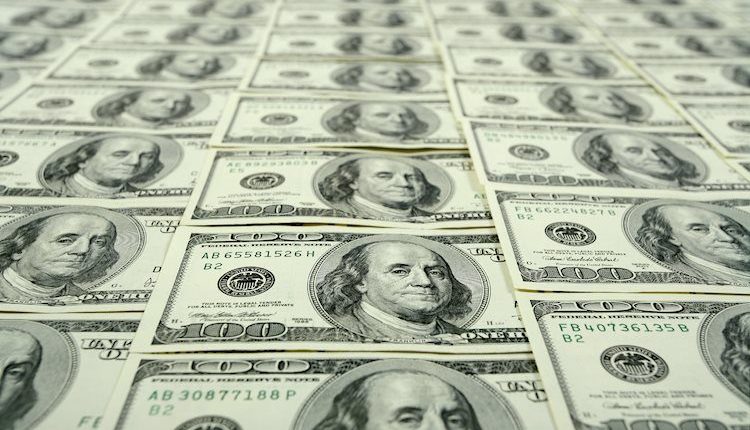- The US Dollar Index plunged toward 106.00 on Wednesday.
- The US Dollar ticked lower, but its losses may be limited as markets are pricing in a more hawkish Fed.
- PCE data from October met expectations for inflation.
In Wednesday’s session, the US Dollar Index (DXY), which measures the value of the USD against a basket of currencies, ticked 1% lower as markets assess the release of high-tier economic data including a Personal Consumption Expenditures (PCE) reading, the Federal Reserve’s (Fed) preferred gauge of inflation.
Daily digest market movers: US Dollar retreats despite sticky inflation data
- Despite US data indicating rising inflation, the DXY remains on the back foot.
- The market is pricing in a more hawkish stance from the Fed, which could lead to less cuts in the near term.
- This hawkish stance is likely contributing to the recent strength of the US Dollar against other currencies.
- Data is showing that the economy keeps doing well with no recession in view.
- The Q3 Gross Domestic Product (GDP) was reported at 2.8% as expected.
- Initial Jobless Claims improved to 213K, better than the expected 217K.
- Durable Goods Orders rose by 0.2% in October, lower than the expected 0.5% but higher than September’s -0.4%.
- The PCE Price Index rose by 0.2% MoM and 2.3% YoY as expected. The core PCE annual figure increased by 2.8% YoY, meeting forecasts as well.
DXY technical outlook: Indicators suggest potential consolidation, but uptrend intact
The Relative Strength Index (RSI) and Moving Average Convergence Divergence (MACD) indicators had been struggling to gain ground lately, and they seemed to have given up on Wednesday as the index retreats to 106.00.
This suggests that the index may be due for a period of consolidation. However, the index remains about its 20,100 and 200-day Simple Moving Averages (SMA), which indicates that the overall momentum remains positive. The DXY is expected to find support at 106.00-106.50 and faces resistance at 108.00.
Fed FAQs
Monetary policy in the US is shaped by the Federal Reserve (Fed). The Fed has two mandates: to achieve price stability and foster full employment. Its primary tool to achieve these goals is by adjusting interest rates. When prices are rising too quickly and inflation is above the Fed’s 2% target, it raises interest rates, increasing borrowing costs throughout the economy. This results in a stronger US Dollar (USD) as it makes the US a more attractive place for international investors to park their money. When inflation falls below 2% or the Unemployment Rate is too high, the Fed may lower interest rates to encourage borrowing, which weighs on the Greenback.
The Federal Reserve (Fed) holds eight policy meetings a year, where the Federal Open Market Committee (FOMC) assesses economic conditions and makes monetary policy decisions. The FOMC is attended by twelve Fed officials – the seven members of the Board of Governors, the president of the Federal Reserve Bank of New York, and four of the remaining eleven regional Reserve Bank presidents, who serve one-year terms on a rotating basis.
In extreme situations, the Federal Reserve may resort to a policy named Quantitative Easing (QE). QE is the process by which the Fed substantially increases the flow of credit in a stuck financial system. It is a non-standard policy measure used during crises or when inflation is extremely low. It was the Fed’s weapon of choice during the Great Financial Crisis in 2008. It involves the Fed printing more Dollars and using them to buy high grade bonds from financial institutions. QE usually weakens the US Dollar.
Quantitative tightening (QT) is the reverse process of QE, whereby the Federal Reserve stops buying bonds from financial institutions and does not reinvest the principal from the bonds it holds maturing, to purchase new bonds. It is usually positive for the value of the US Dollar.
Read the full article here

